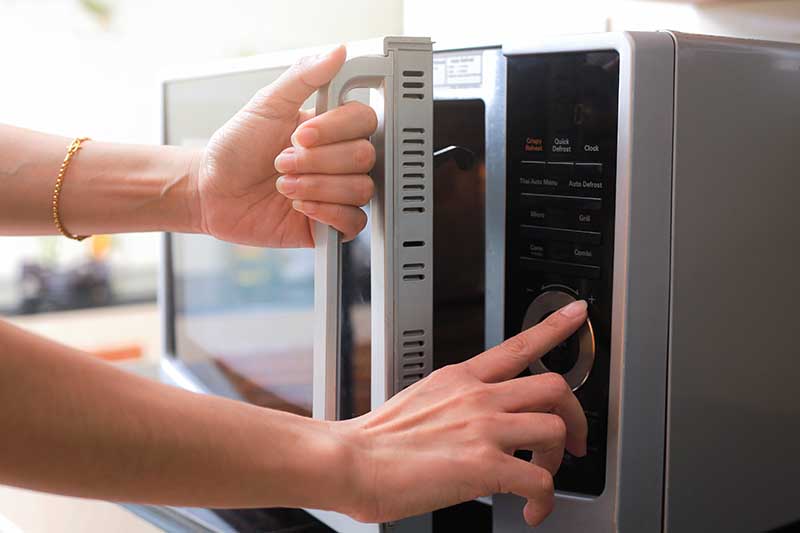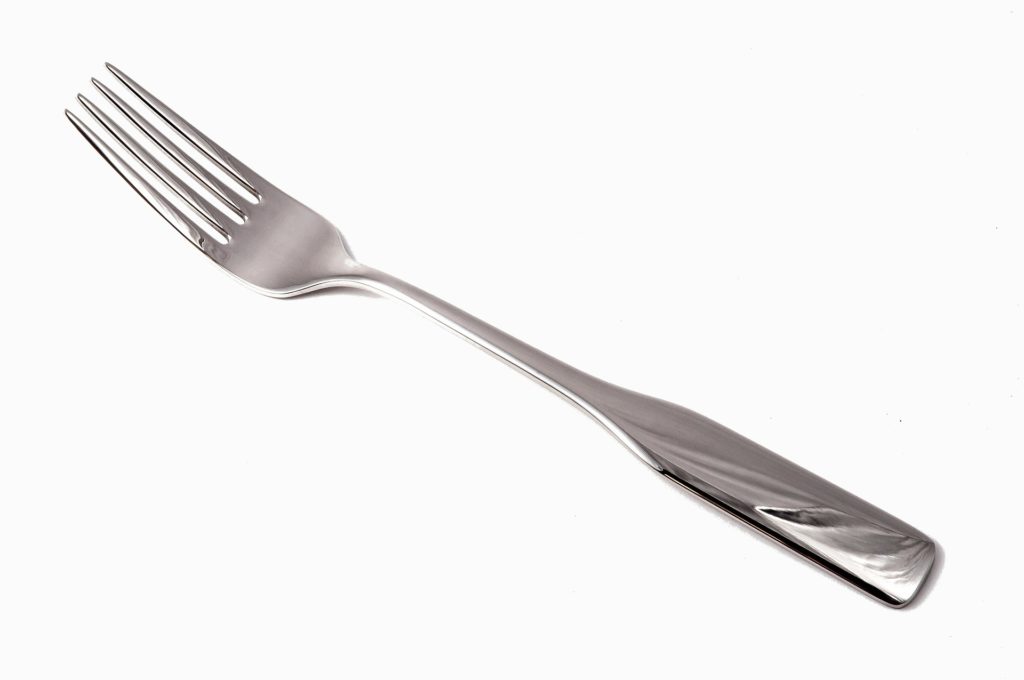Why Does Metal Spark in the Microwave? What The Science Says
-
Pete Ortiz
- Last updated:

Metals, like all elements on the planet, are made up of atoms. And atoms are composed of several very tiny particles classified as either protons, neutrons, or electrons. The protons are always positively charged, but the electrons house negative charges. Neutrons usually don’t have any charges because their quarks balance each other out.
Atoms are normally regarded as electrically neutral particles. But if something like radiant energy interrupts that neutrality, the electrons will start hopping around, looking for potential mates in the form of positive charges. The sparks that you get to see when metal is placed inside an oven are a clear sign that its electrons are trying to woo the positive charges in the air molecules.
Nonetheless, to better understand this whole concept, we first have to revisit history.
Brief History
Contrary to popular belief, the driving force behind the conception of the microwave idea wasn’t a need or want. It was actually an accidental discovery, made by Percy Spencer, who worked as a systems maintenance engineer at the time.
In 1945, Mr. Spencer was tasked with carrying out maintenance work on a live radar set. During that process, he noticed that any time he would get within close proximity of the equipment, he would feel some tingling sensation. And that wasn’t the only strange observation that piqued his interest, as the chocolate bar in his pocket had turned into goo.
Being a scientist, he felt compelled to conduct an investigation that led him to this remarkable discovery. Apparently, the radar set that he was working on had a magnetron tube that emitted microwaves. And the waves were hot enough to not only melt chocolate, but also draw a reaction from his body.
We felt obligated to share this brief history just to give you an idea of what a microwave oven is capable of. But to effectively answer the question of “why can’t you put metal in the microwave?”, we still have to dive deeper and talk about the inner workings of this mid-20th-century technology.

What’s the Science Behind the Microwave?
First off, it’s important to note that all microwaves are designed around something called a magnetron. We’re talking about a device that’s shaped like a tube, is a vacuum, and facilitates the flow of a magnetic field.
The magnetron usually spins electrons around, ultimately generating waves that are electromagnetic in nature. Scientists who’ve meticulously studied the nature of waves have confirmed that they have a frequency that’s approximately 2.5 gigahertz. That’s to say, the waves keep passing a fixed point 2.5 billion times per second.
It’s common knowledge in the scientific realm that various materials absorb radiant energy at varying frequencies. Water, for example, is known to efficiently absorb microwave radiation at a frequency of 2.5 gigahertz (GHz).
Seeing as most of our meals are primarily made of water, your food will easily absorb the radiant energy emanating from the microwave, thus heating up. The plate or container will remain cold because they absorb radiant energy at a different frequency.
Just so you know, 2.5 GHz is not the optimal frequency for warming up water. We do have the 10 GHz frequency that is well-primed to get the job done faster, though it works with a caveat.
You see, if the device was to be designed to emit radiation at 10 GHz, it won’t evenly heat the food up. The molecules of water at the top will quickly absorb heat, and maybe inch closer to a boil, while the bottom molecules are still stone cold.
This is a phenomenon that has been tested on numerous occasions, so there’s no iota of doubt that 2.5 GHz is the ideal frequency.
What Causes Metal to Spark Inside the Microwave?
1. Radiant Energy
When the radiant energy emanating from your microwave gets into contact with any metallic surface, the electrons instantaneously get sloshed around. But you won’t notice any changes if the metal surface is smooth.
However, if the metal features tines, spikes, or prongs — similar to those of a fork — there’s a high likelihood that the charges will start piling up, as the electrons ping-pong back and forth. Consequently, this leads to a significantly high concentration of voltage.

2. Voltage
That voltage is what causes the spark, as it often pulls electrons from the molecules in the surrounding air. That pull seems like a violent reaction because the metal atoms are desperate to get back to a state of equilibrium.
Atoms that are missing one or two electrons are usually classified as charged/ionized particles. What’s more, they are very reactive, hence the reason why they absorb radiant energy more rapidly.
As the reaction continues, more sparks are formed, and more of the radiation energy produced by the microwave gets sucked in. Ultimately, forcing more molecules to get ionized. If nothing’s done about the situation, it automatically snowballs into something uncontrollable. That’s why you see people running in movies when the sparks start flying everywhere.
3. Metal Form
Just don’t forget that such an occurrence will only be observed in cases where the metal in question has rough edges. For instance, aluminum foil placed inside a microwave will only spark up when crumpled into a ball. As a flat smooth surface material, it won’t show any reaction.
Does this mean you’ll have to throw away the heated food, if you forget to remove the fork beforehand? No, your food will still be considered safe for consumption. What you should be worrying about is the potential damage caused by the sparks to the microwave, because that reaction’s intensity is enough to render it permanently damaged.
Why Do Grapes Spark the Same Way Metals Do Inside a Microwave?
Halved grapes are also known to produce the same effect as metals when placed inside a hot microwave. In fact, the showing will be better than what you’re used to, seeing as the reaction also generates gaseous particles and plasma.
The scientific principle behind this phenomenon is similar to that of metal, but also not so similar. It involves the concentration of radiation energy — just like what’s observed in the metallic reaction — but different in that it heavily relies on geometry.
The size and shape of the grapes compelled the microwave energy to pile up inside the fruit, to a point where they started ripping electrons from the potassium and sodium minerals naturally found in grapes. This led to the generation of the sparks witnessed, which ultimately transformed into plasma. The gas particles are a by-product of the reaction as well.

Final Words
If you don’t want to damage your microwave, don’t put in metal that has dead ends or one with kinks. When radiant energy comes into contact with such metals, it forces the electrons to shuffle back and forth, thus creating concentration spots of negative charges. Always make sure your metal is smooth, non-flammable, and completely covered by food — Not grapes, though!
Featured Image Credit: Zyn Chakrapong, Shutterstock
Contents


